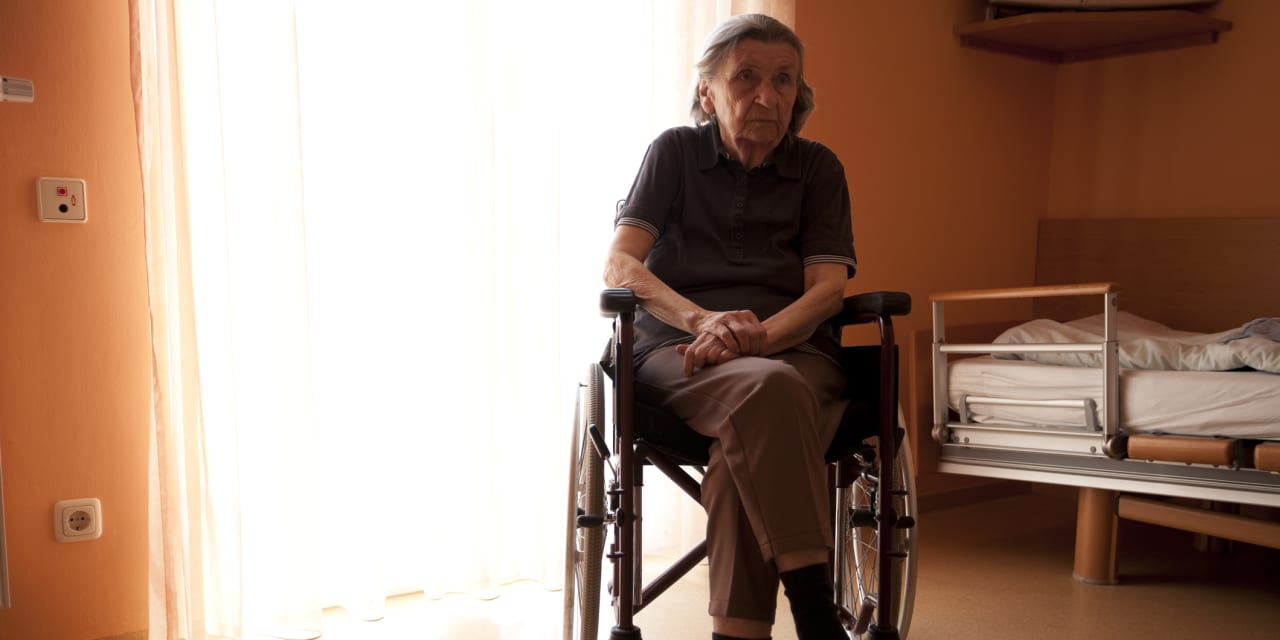Medicare patients who were at the highest risk of severe COVID-19 infections were less likely to get Paxlovid or other treatments, according to new research published Friday in JAMA Health Forum.
Among the most vulnerable group — the people most likely to die from COVID — less than 5% of patients received any outpatient COVID treatment, compared with 7.5% of the lowest-risk patients, according to the study, led by researchers at Harvard Medical School. The research focused on more than 20 million people who were enrolled in original Medicare in 2022 and their use of COVID treatments including Pfizer Inc.’s
PFE,
Paxlovid, Merck & Co. Inc.’s
MRK,
Lagevrio, Gilead Sciences Inc.’s
GILD,
Veklury, and monoclonal antibodies.
Patients aged 90 and older were less likely to get those treatments than people aged 65 through 69, the researchers found, despite their higher rates of COVID-related hospitalization. And despite COVID’s outsized toll in long-term care facilities, people who had a nursing-home stay in 2022 were less likely to get treatment than those who lived in the community, according to the study. Rural residents and lower-income people were also treated at lower rates than city-dwellers and higher-income patients, the researchers found.
The results are “sort of bananas,” said Andrew Wilcock, lead author of the study and a health services researcher at Harvard Medical School, as people with the greatest risks should be expected to use the treatments more often. People aged 80 and older, for example, account for less than 4% of the population but more than 40% of COVID deaths, according to Morehouse School of Medicine’s Satcher Health Leadership Institute health-equity tracker.
In 2022 alone, the deaths of more than 16,500 older adults studied and more than 10,000 hospitalizations could have been avoided by reallocating COVID treatments based on patients’ risk for severe infections, the researchers found. Healthcare providers need to investigate their patterns of care and figure out where the most vulnerable patients are running into treatment roadblocks, the study said.
Doctors should consider antiviral drugs for patients with mild to moderate COVID who have any risk factors for severe infection, according to the Centers for Disease Control and Prevention. Age is the biggest risk factor for severe outcomes, the CDC says.
The results overlap with another new study of Veterans Health Administration patients, finding that 80% of immunosuppressed patients who did not get a COVID antiviral drug were not offered the treatment. For nearly half of those patients, the only reason given for not offering the drugs was that the symptoms were mild, although the antivirals could reduce the risk of developing more severe symptoms. The study, led by researchers with the U.S. Department of Veterans Affairs’ cooperative studies program, was published Thursday in the CDC’s Morbidity and Mortality Weekly Report.
Consistent with previous research, the JAMA Health Forum study also found that white patients were more likely than Black or Hispanic patients to get treatment. Black and Hispanic people are more likely than white people to die of COVID, according to the Satcher health equity tracker.
Cost barriers don’t explain the overall differences in treatment, the study said, because during the period studied, COVID treatments were free for patients. Now that the treatments have moved to the commercial market, some patients may face out-of-pocket costs that may make the disparities even worse, the researchers wrote. Through the end of this year, however, people covered under Medicare and Medicaid and the uninsured are eligible to get Paxlovid at no cost through a patient assistance program operated by Pfizer. The drugmaker separately operates a co-pay savings program for people with commercial health insurance.
Access to telehealth may explain some of the treatment gaps found in the JAMA Health Forum study. People who used telehealth were more likely to get treatment than those who didn’t, the researchers found. Lower-income, older and rural patients may have more trouble navigating the process of getting a prescription outside a face-to-face doctor visit — including getting an at-home test, contacting a provider and setting up a telehealth visit, according to the study.
More than 40% of the people who did get treatment were not diagnosed with COVID around the time of their treatment. “Folks in lower-risk groups, maybe, benefited more from those back-channel conversations,” Wilcock said, simply calling their doctors and asking for a prescription rather than arranging a formal visit.
When more vulnerable people didn’t get COVID treatments, it generally wasn’t because they weren’t testing for COVID or going to the doctor, the study found. Lower-income patients, for example, were more likely than higher-income patients to have a COVID-related doctor visit, but were still less likely to get any COVID treatment.
The U.S. Food and Drug Administration’s full approval of Paxlovid, which came last year, may have made doctors more willing to prescribe the treatment, Wilcock said. The antiviral was previously available under an emergency-use authorization.
Read the full article here




